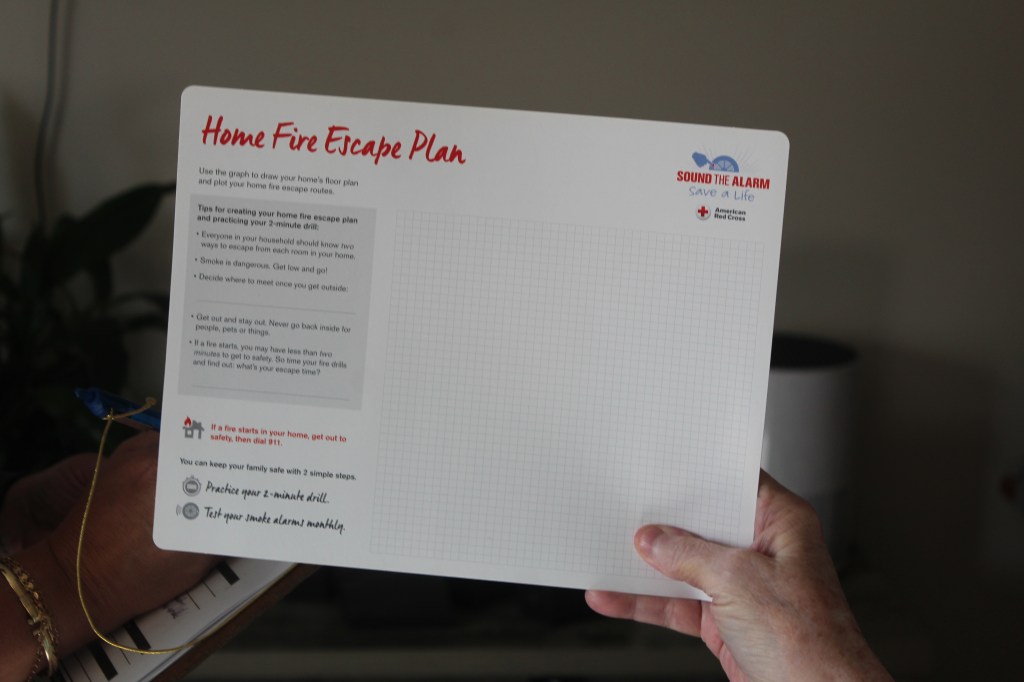By Mary Falconer-Williams, American Red Cross volunteer
Introduction by Ryan Lang, American Red Cross board member and volunteer
When Clark Griswold’s dad was teaching him everything he knew about exterior illumination, perhaps a lesson on safeguarding his home during the holidays was in order. Anyone who’s seen the classic “National Lampoon’s Christmas Vacation” knows that everything that can go wrong, does go wrong for the Griswolds. But maybe, if Clark had been better prepared with tips from the American Red Cross, things may have gone more smoothly for him.
When you are decorating for the holidays, it’s so tempting – I know! – to load up one plug beyond its capacity. Why would they make it so you can daisy chain a set of lights if they didn’t mean for you to do so? And if I just need the wire to stretch one foot more, why can’t I just plug a power strip into a power strip into the extension cord?
The U.S. Fire Administration states on its website, “In 2021, an estimated 24,200 residential building electrical fires were reported to United States fire departments.”
Additionally, the National Fire Protection Agency indicates that December is the leading month for home fires in the U.S. According to them an annual average of 155 home fires were the result of Christmas tree fires, with electrical distribution or lighting equipment involved in more than two in five home Christmas tree fires.
Another way to make to protect yourself from home fires? You’re your home safely during cold weather. According to the National Fire Protection Association (NFPA), space heaters are most often responsible for home heating fires. Follow these tips on how to safely heat your home:
● If you must use a space heater, never leave it unattended. Place it on a level, hard, and nonflammable surface, such as a ceramic tile floor. Don’t place it on rugs and carpets, or near bedding and drapes.
● Plug space heater power cords directly into outlets — never into an extension cord. Turn the space heater off every time you leave the room or go to sleep.
● Keep children, pets, and anything that can burn at least three feet away from heating equipment.
● Never use a cooking range or oven to heat your home.
● Never leave a fire burning in the fireplace unattended. Make sure any embers in the fireplace are extinguished before going to bed or leaving home. Use a glass or metal fire screen to keep embers in the fireplace.
● Have furnaces, chimneys, fireplaces, wood, and coal stoves inspected annually by a professional and cleaned if necessary.
The NFPA also indicates that Christmas Day and Christmas Eve were the second and third-leading days of the year for home cooking fires, respectively, in 2022. So, as you’re putting the fixings for your holiday meal on the stove, keep these tips in mind:
● Stand by your pan. If you leave the kitchen, turn the burner off.
● What you are cooking. Fires start when the heat is too high. If you see any smoke or the grease starts to boil, turn the burner off.
● Turn pot handles toward the back of the stove so that no one can bump them or pull them over.
● Keep a pan lid or baking sheet nearby. Use it to cover the pan if it catches on fire. This will put out the fire.
● Installing smoke alarms can help save lives, but make sure it is 10 feet or more away from your cooking surface.
RED CROSS TIPS to help protect your family this season, and year-round: test your smoke alarms monthly and practice your home fire escape plan until everyone can escape in less than two minutes — the amount of time you may have to get out of a burning home before it’s too late.
Posted by Ryan Lang, Red Cross board member and volunteer























